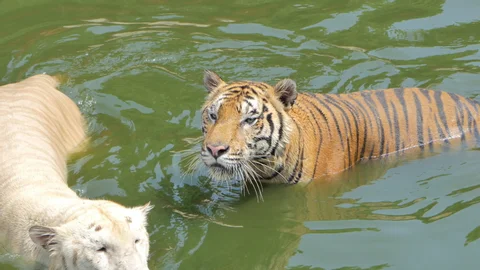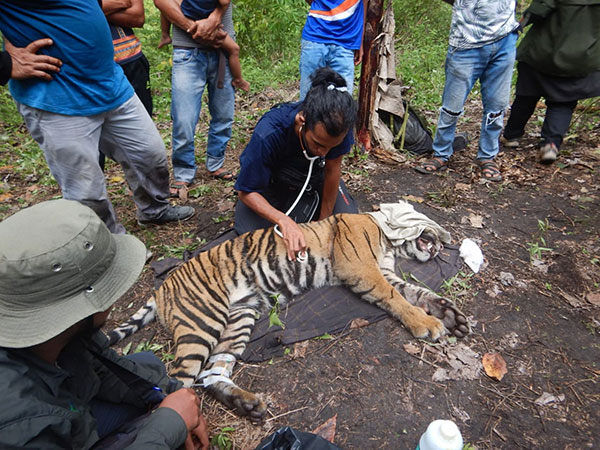
Odisha, a state in eastern India known for its rich biodiversity, is facing a serious crisis in wildlife conservation. Over the past three years, 14 tigers, including Royal Bengal Tigers, have been poached, raising alarms among conservationists. The state’s forests, particularly the Similipal Tiger Reserve (STR), are home to a dwindling population of big cats, and illegal poaching is pushing them closer to extinction. Despite ongoing efforts, authorities continue to struggle with protecting these majestic animals from wildlife criminals.
Odisha Struggles to Protect Wildlife as 14 Tigers
| Topic | Details |
|---|---|
| Total Tigers Poached | 14 tigers killed in 3 years |
| Main Area Affected | Similipal Tiger Reserve (STR) |
| Government Actions | Increased patrolling, use of technology, anti-poaching camps |
| Challenges | Poaching, habitat destruction, underreporting |
| Related Resource | National Tiger Conservation Authority (NTCA) |
Odisha’s battle against tiger poaching is far from over. While authorities and conservationists are working tirelessly to protect these magnificent animals, stronger policies, community involvement, and technological advancements are crucial for long-term success. Every individual, from government officials to local villagers and even tourists, has a role to play in ensuring that future generations can witness tigers in their natural habitat.
Why Are Odisha’s Tigers Being Poached?

Tiger poaching remains one of the biggest threats to wildlife conservation in India. Poachers target tigers primarily for their skin, bones, and body parts, which are highly valued in illegal wildlife trade markets. Despite strict laws like the Wildlife Protection Act, 1972, criminals continue to operate in remote forested areas, making it difficult for authorities to track and stop them.
Major Reasons for Poaching
- Black Market Demand: Tiger parts are sold in underground markets for traditional medicine and ornaments.
- Lack of Manpower and Surveillance: Insufficient forest staff makes it easier for poachers to operate.
- Human-Tiger Conflict: Villagers sometimes resort to retaliatory killings when tigers attack livestock.
- Inadequate Funding: Conservation efforts often suffer from budget constraints.
- Deforestation and Habitat Loss: As forests shrink, tigers move closer to human settlements, increasing conflicts and making them vulnerable to poaching.
Government’s Response to Poaching

The Odisha Forest Department, along with the National Tiger Conservation Authority (NTCA), has been implementing various strategies to curb poaching. Here’s how:
1. Increased Patrolling and Anti-Poaching Measures
- Forest guards are deployed in high-risk areas.
- Anti-poaching camps have been set up in protected zones.
- Over 250 poachers have been arrested in the last three years.
2. Use of Technology for Monitoring
- Camera Traps: Hidden cameras help track poachers and wildlife movement.
- GPS Tracking: Authorities use satellite data to monitor tiger activity.
- Drones: Surveillance drones assist in identifying poaching hotspots.
3. Community Involvement and Awareness Campaigns
- The government collaborates with local communities to educate them about the importance of tiger conservation.
- Villagers are encouraged to report suspicious activities in forests.
- Eco-tourism initiatives help communities benefit financially from conservation rather than poaching.
4. Strengthening Wildlife Corridors
- Authorities are working to create safe passages between forest reserves to prevent tigers from straying into human settlements.
- Reforestation programs aim to restore lost habitats, providing tigers with sufficient space and prey.
Impact of Poaching on Wildlife Conservation

Poaching not only threatens tiger populations but also disrupts the entire ecosystem. Tigers are apex predators, meaning their presence is crucial for maintaining a balanced food chain. Losing tigers leads to an overpopulation of prey species, which can damage vegetation and disturb the natural order.
Consequences of Tiger Extinction
- Biodiversity Loss: Tigers play a key role in maintaining ecological balance.
- Economic Impact: Wildlife tourism, a major revenue source for Odisha, would suffer.
- Decline in Genetic Diversity: The fewer tigers remain, the weaker the genetic pool, leading to weaker offspring.
- Increased Man-Animal Conflict: As tiger populations decline, other predators like leopards may encroach on human settlements.
Steps to Protect Odisha’s Tigers

While authorities are taking action, conservation needs stronger policies, better enforcement, and community participation. Here are some ways to enhance tiger protection:
1. Strengthen Laws and Their Implementation
- Increase penalties for poaching and illegal wildlife trade.
- Set up fast-track courts for wildlife crime cases.
2. Boost Funding and Resources
- Allocate more budget to tiger reserves.
- Improve salaries and training for forest officers.
3. Enhance Technology Use
- Expand the use of AI-based surveillance systems.
- Implement real-time tracking of tiger movements.
4. Promote Eco-Tourism as an Alternative
- Develop sustainable tourism to support local communities.
- Train villagers as wildlife guides, reducing their dependence on poaching.
5. Educate the Public and Strengthen Conservation Initiatives
- Schools should introduce wildlife conservation as part of their curriculum.
- Nationwide awareness campaigns should be conducted to highlight the importance of tiger conservation.
Frequently Asked Questions (FAQs)
1. Why is poaching such a big problem in Odisha?
Poaching continues due to high demand for tiger parts, lack of strict law enforcement, and insufficient surveillance in remote forest areas.
2. What is the government doing to protect tigers?
The Odisha government has increased forest patrols, deployed advanced monitoring systems, and implemented community awareness programs.
3. How can locals help in tiger conservation?
Local communities can report illegal activities, support eco-tourism, and participate in conservation programs.
4. Are tigers going extinct in Odisha?
While tigers are not extinct, their population is critically low. Conservation efforts are essential to prevent their disappearance.
5. How can I contribute to tiger conservation?
You can support conservation organizations, spread awareness, donate to wildlife funds, and avoid products made from endangered species.
6. What are the penalties for poaching tigers in India?
Under the Wildlife Protection Act, 1972, poaching tigers is a criminal offense, punishable by up to seven years of imprisonment and heavy fines.










